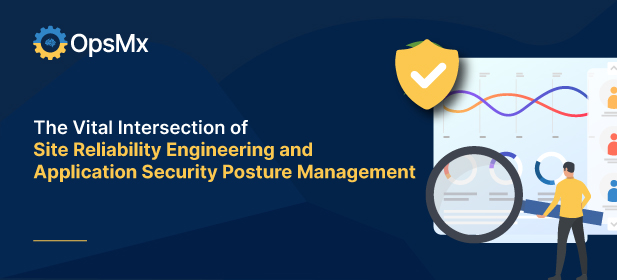In the ever-evolving landscape of digital infrastructure, two critical domains have emerged as cornerstones of modern technological operations: Site Reliability Engineering (SRE) and Application Security Posture Management (ASPM). While these fields may seem distinct at first glance, their convergence is not only natural but also essential for ensuring the reliability, security, and performance of digital services.
In this blog post, we’ll delve into why Site Reliability Engineers care deeply about Application Security Posture Management and the symbiotic relationship between the two.
Ensuring Reliability Through Security
At its core, Site Reliability Engineering is all about maintaining and improving the reliability of systems and services. SREs are tasked with designing, building, and operating large-scale, distributed systems that can withstand the rigors of modern-day demands. This includes minimizing downtime, optimizing performance, and ensuring seamless user experiences. However, reliability cannot be achieved in isolation from security.
Application Security Posture Management focuses on assessing, monitoring, and remediating security risks within applications throughout their lifecycle. This encompasses various aspects, such as vulnerability management, compliance adherence, and threat detection. By integrating security practices into the fabric of their operations, SREs can bolster the reliability of systems by mitigating potential security incidents that could disrupt service availability or compromise data integrity.
Mitigating Operational Risks
One of the fundamental principles of Site Reliability Engineering is to embrace risk as a quantifiable metric that can be managed and optimized. However, not all risks are created equal. Security vulnerabilities present a unique set of operational risks that can have far-reaching consequences if left unaddressed. Whether it’s a critical software flaw exploited by malicious actors or a compliance violation resulting in regulatory penalties, the impact of security incidents can be profound.
By proactively managing the security posture of applications, SREs can identify and mitigate potential risks before they escalate into operational crises. This proactive approach aligns with the core tenets of SRE methodology, which emphasize automation, monitoring, and iterative improvements. By integrating security assessments into the deployment pipeline and leveraging tools for continuous security monitoring, SREs can stay ahead of emerging threats and vulnerabilities, thereby enhancing the overall resilience of their systems.
Fostering Collaboration and Accountability
Effective collaboration between SRE and security teams is paramount for achieving both reliability and security objectives. While SREs focus on operational excellence and service reliability, security teams bring expertise in threat intelligence, risk assessment, and compliance frameworks. By fostering a culture of collaboration and shared accountability, organizations can bridge the gap between these traditionally siloed disciplines.
Application Security Posture Management serves as a unifying framework that enables cross-functional teams to assess and address security risks collectively. By providing visibility into the security posture of applications and facilitating remediation workflows, ASPM platforms empower SREs and security practitioners to collaborate seamlessly.
This convergence of roles fosters a holistic approach to risk management, where reliability and security considerations are treated as integral components of the operational lifecycle.
Conclusion
In an era defined by digital transformation and escalating cyber threats, the symbiotic relationship between Site Reliability Engineering and Application Security Posture Management has never been more critical. By integrating security practices into the fabric of reliability engineering, organizations can enhance the resilience of their digital infrastructure while minimizing operational risks.
As SREs continue to champion the principles of reliability, they must recognize the inherent intersectionality of reliability and security, thereby ensuring that their systems remain robust, performant, and secure in the face of evolving challenges.
About OpsMx
OpsMx is a leading innovator and thought leader in the Secure Continuous Delivery space. Leading technology companies such as Google, Cisco, Western Union, among others rely on OpsMx to ship better software faster.
OpsMx Secure CD is the industry’s first CI/CD solution designed for software supply chain security. With built-in compliance controls, automated security assessment, and policy enforcement, OpsMx Secure CD can help you deliver software quickly without sacrificing security.
OpsMx Deploy Shield adds DevSecOps to your existing CI/CD tools with application security orchestration, correlation, and posture management.


0 Comments